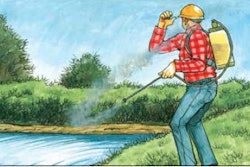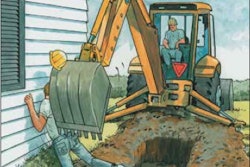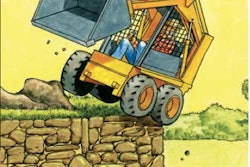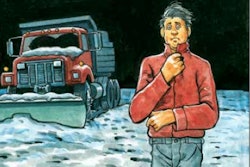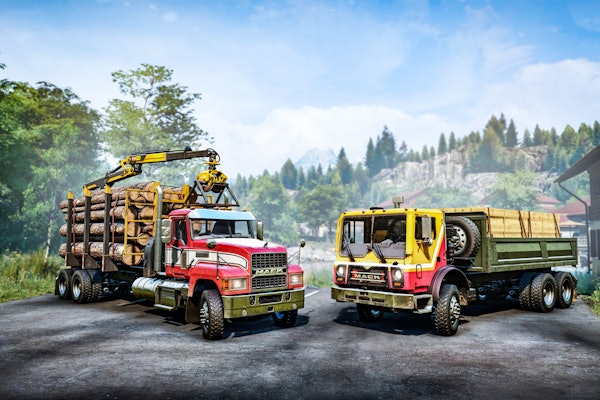
What the expert says: This accident wouldn’t have happened if the worker had not overreached, the ladder had been on a flat, stable surface and someone had been holding it steady, says Nick Reynolds, risk control manager for WS Pharr, which provides insurance for Metro Atlanta Landscape & Turf Association members. Abrasion-resistant gloves made of leather or Kevlar would have helped as well. The ideal solution for such tasks is using a pole shear, a tool with pruning blades attached to a 6-foot pole, rather than gas-powered or handheld pruners, Reynolds says. Many landscape companies have turned to these machines due to their reach capabilities and because they keep blades away from workers’ bodies. If pole shears are available at your company, use them for high pruning jobs whenever possible.
Cuts and abrasions occur most often in the landscape industry when workers are hand pruning, changing mower blades and using pocket or box-cutter-type knives. Common pruning mistakes include not wearing abrasion-resistant gloves and eye protection, inattention and holding gas- or electric-powered pruners with one hand (they’re designed to be held with two). Using a tool with dull blades also is a safety hazard. Because you have to apply more pressure, the tool is more likely to slip and cut your leg or foot. Wear sturdy, steel-toe boots when pruning to protect your feet and help you maintain balance. The tendency of workers to relax their arms in front of them while holding gas or electric pruners often causes cuts on the upper thighs. Wearing chainsaw chaps can prevent this.
When sharpening mower blades, wear abrasion-resistant gloves and eye/face protection. This will shield you if the blade slips or part of it breaks off, sending steel fragments flying through the air. The sharpening stone is as likely to break, with similar results, Reynolds notes.
The knives you use to cut string from hay bales, open material bags, etc. cause injuries when they’re dull, not properly sheathed or don’t have self-retracting blades.
The long sleeves, pants and gloves you should wear for all landscaping jobs will further protect you from scrapes, cuts and abrasions.
“It boils down to paying attention to where your hands are at all times, focusing on performing the job – not trying to rush – and having the right, well-maintained equipment,” Reynolds says.

